Simulated Space: Parker Solar Probe Enters Thermal Vacuum Testing
Posted on 2018-01-17 17:30:25On Wednesday, Jan. 17, NASA’s Parker Solar Probe was lowered into the 40-foot-tall thermal vacuum chamber at NASA’s Goddard Space Flight Center in Greenbelt, Maryland. The spacecraft will remain in the chamber for about seven weeks, coming out in mid-March for final tests and packing before heading to Florida. Parker Solar Probe is scheduled to launch from NASA’s Kennedy Space Center on July 31, 2018, on a Delta IV Heavy launch vehicle.
The thermal vacuum chamber simulates the harsh conditions that Parker Solar Probe will experience on its journey through space, including near-vacuum conditions and severe hot and cold temperatures.
“This is the final major environmental test for the spacecraft, and we’re looking forward to this milestone,” said Annette Dolbow, Parker Solar Probe’s integration and test lead from the Johns Hopkins Applied Physics Lab, which designed, built, and will manage the mission for NASA. “The results we’ll get from subjecting the probe to the extreme temperatures and conditions in the chamber, while operating our systems, will let us know that we’re ready for the next phase of our mission – and for launch.”
During thermal balance testing, the spacecraft will be cooled to -292 degrees Fahrenheit (-180 Celsius). Engineers will then gradually raise the spacecraft’s temperature to test the thermal control of the probe at various set points and with various power configurations.
Next, thermal cycling testing will transition the spacecraft from cold to hot and back again several times, simulating the conditions it will experience during its mission to the Sun. The Parker Solar Probe team will also test operation of the spacecraft’s hardware at both hot and cold plateaus, as well as perform a mission simulation.
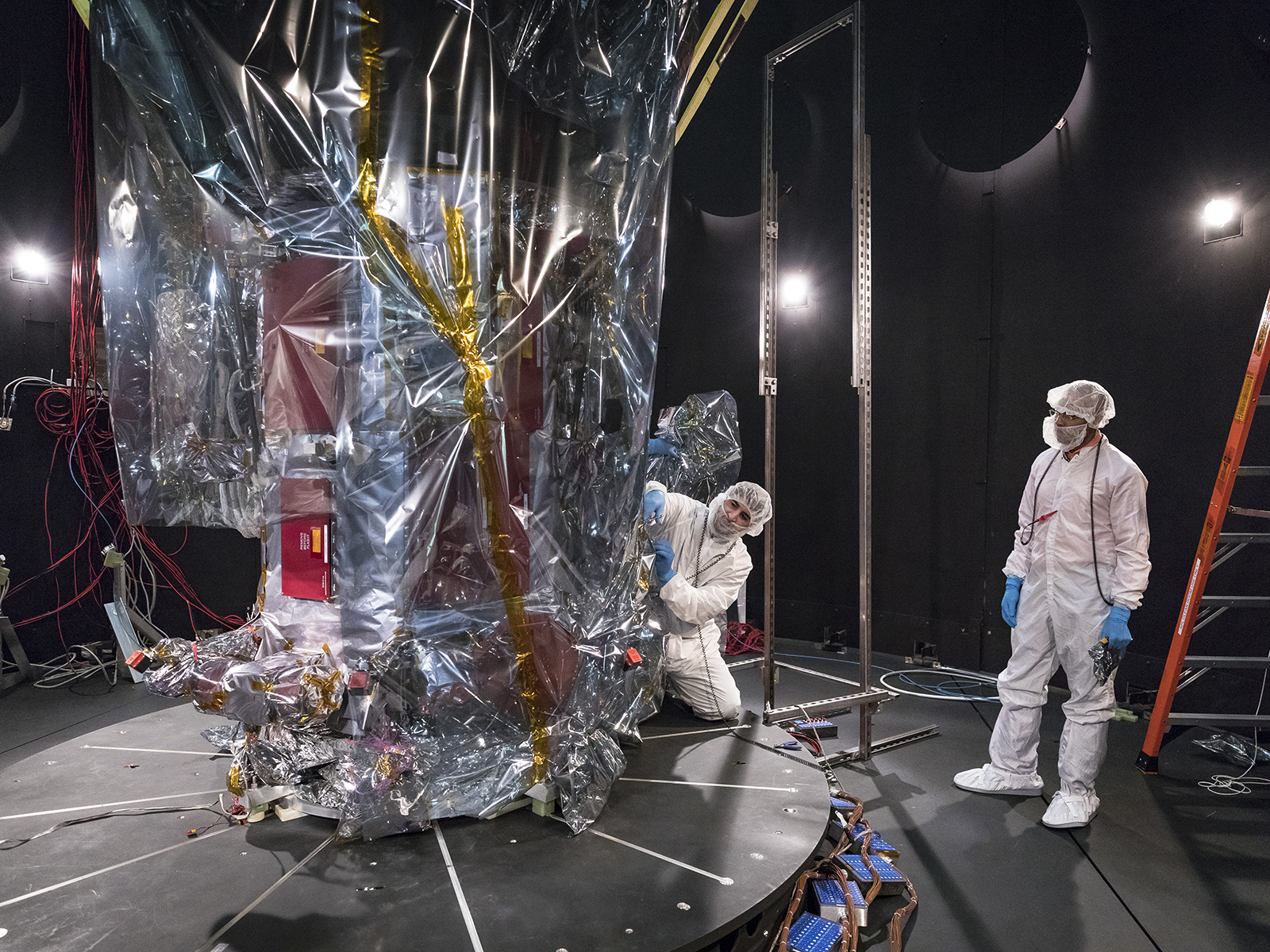
MoveintoTVGSFC
Credit: NASA/Johns Hopkins APL/Ed Whitman
High-Res Image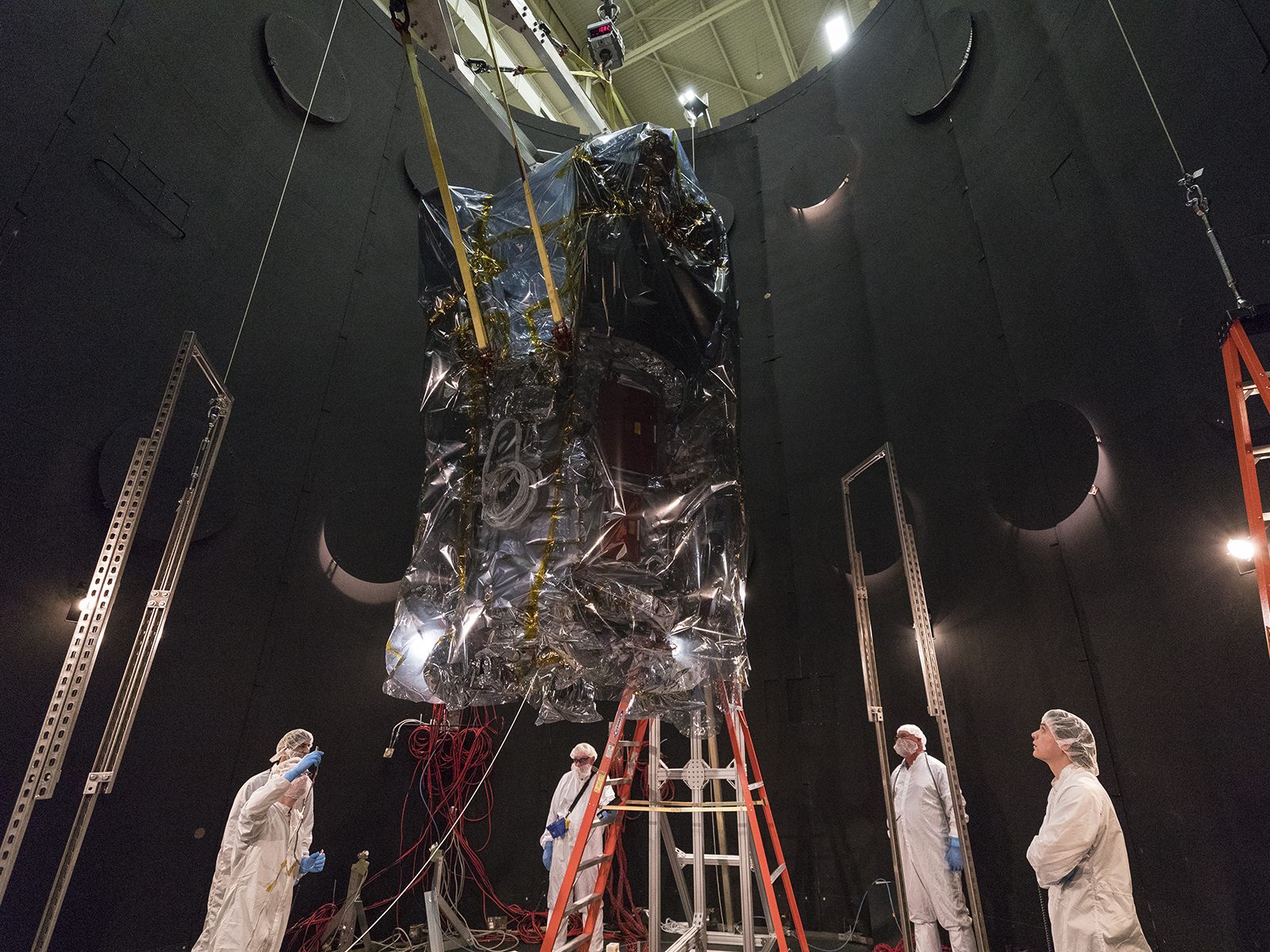
MoveintoTVGSFC
Credit: NASA/Johns Hopkins APL/Ed Whitman
High-Res Image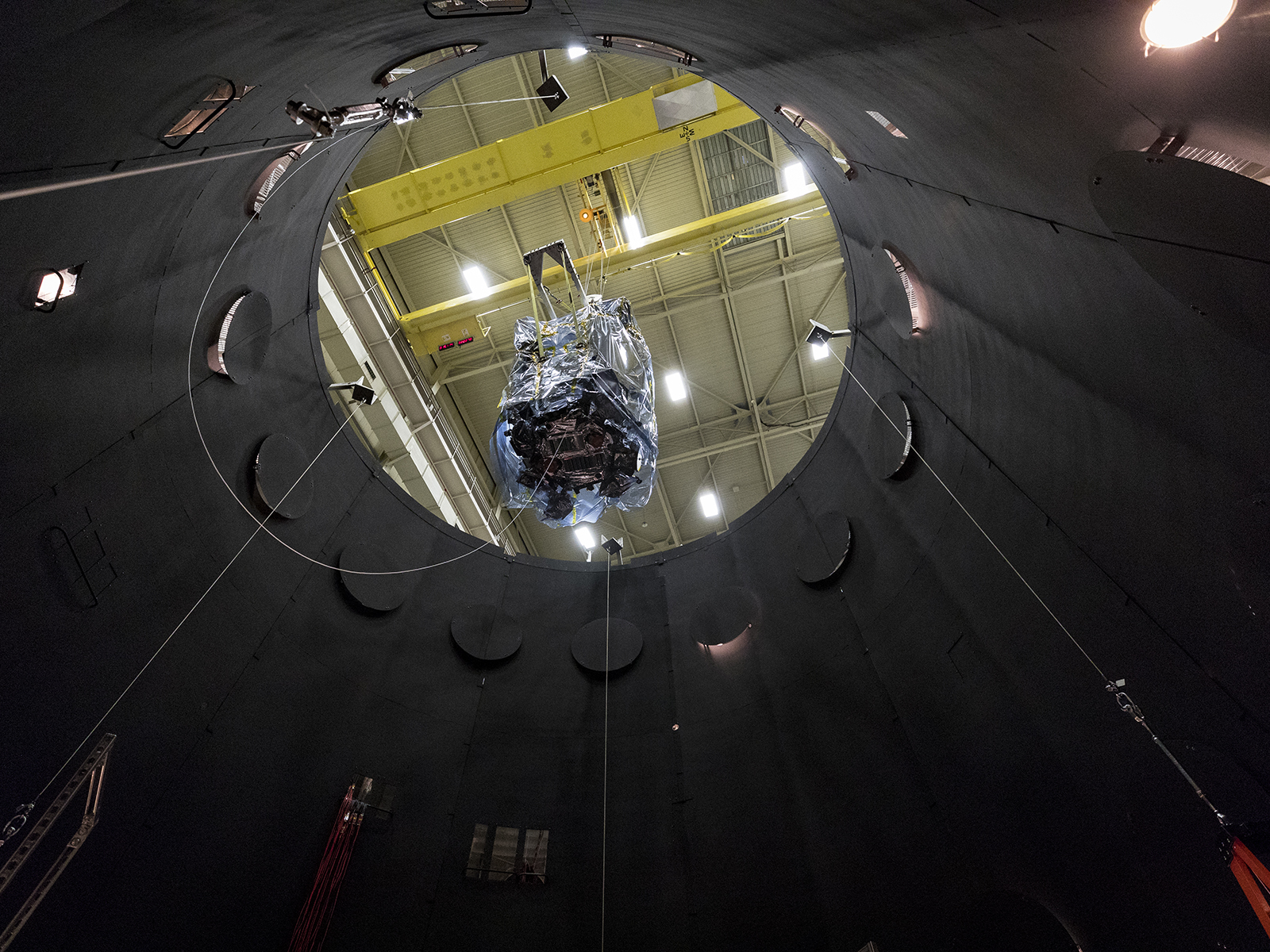
MoveintoTVGSFC
Credit: NASA/Johns Hopkins APL/Ed Whitman
High-Res Image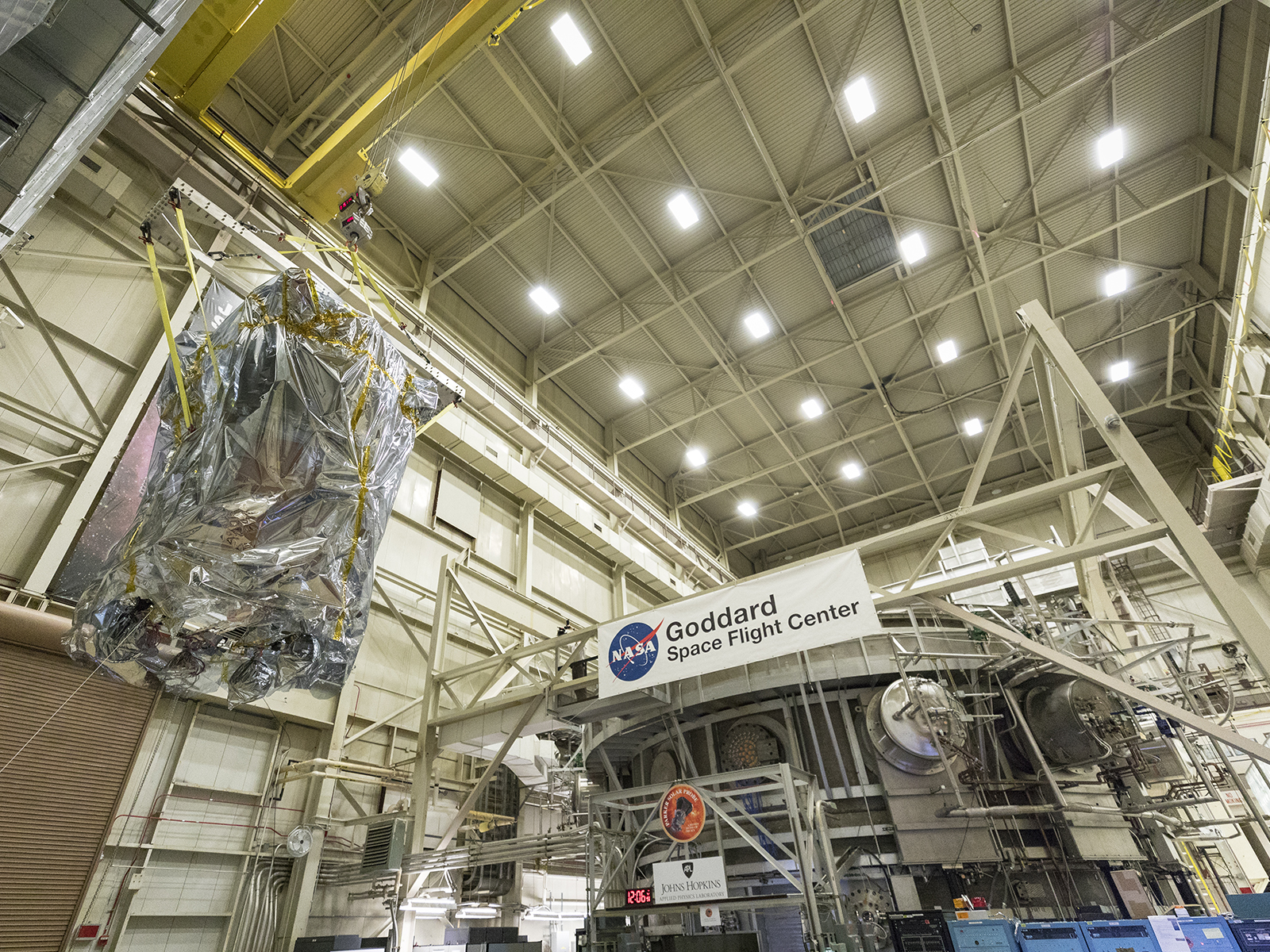
MoveintoTVGSFC
Credit: NASA/Johns Hopkins APL/Ed Whitman
High-Res Image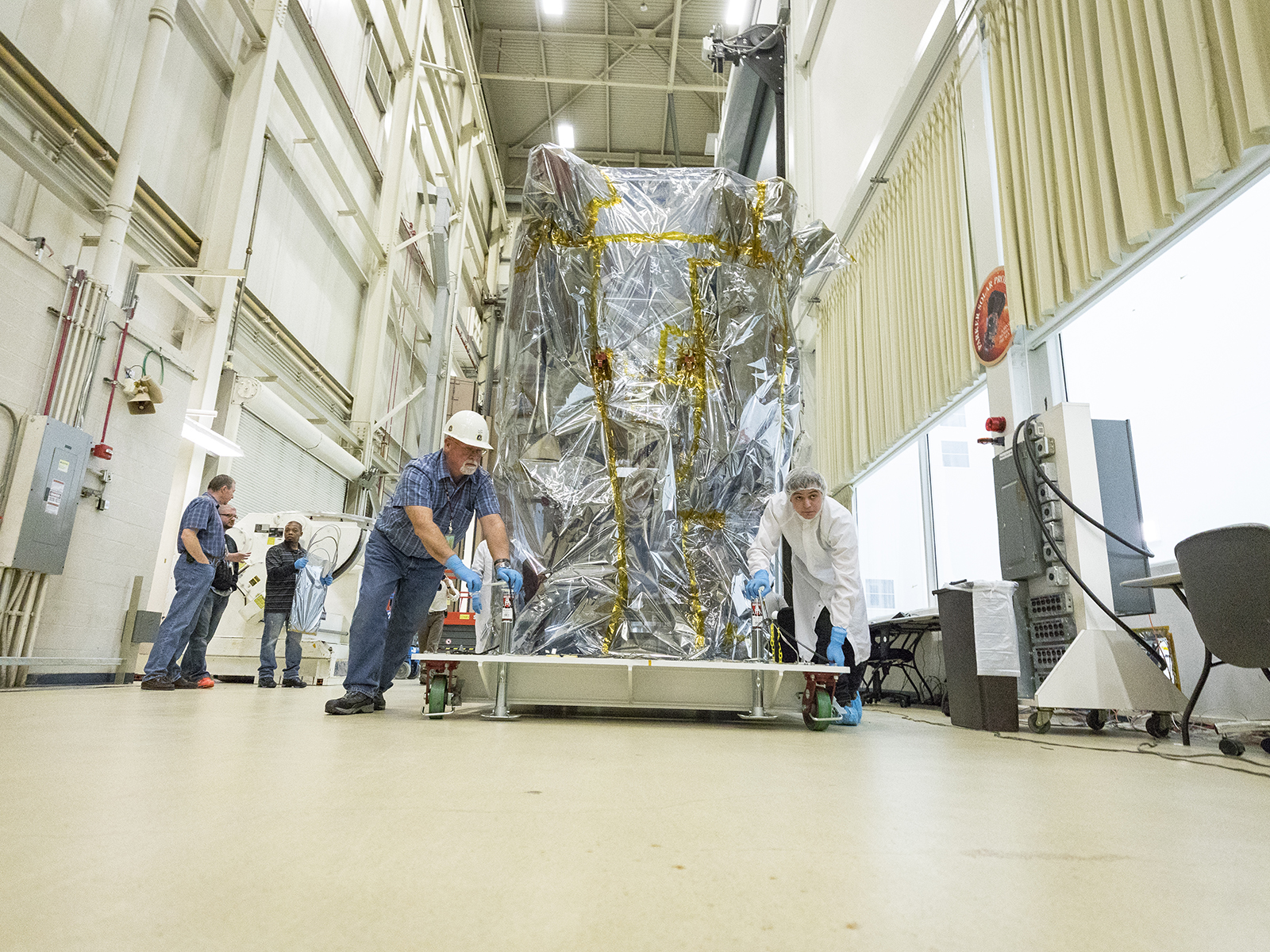
MoveintoTVGSFC
Credit: NASA/Johns Hopkins APL/Ed Whitman
High-Res Image